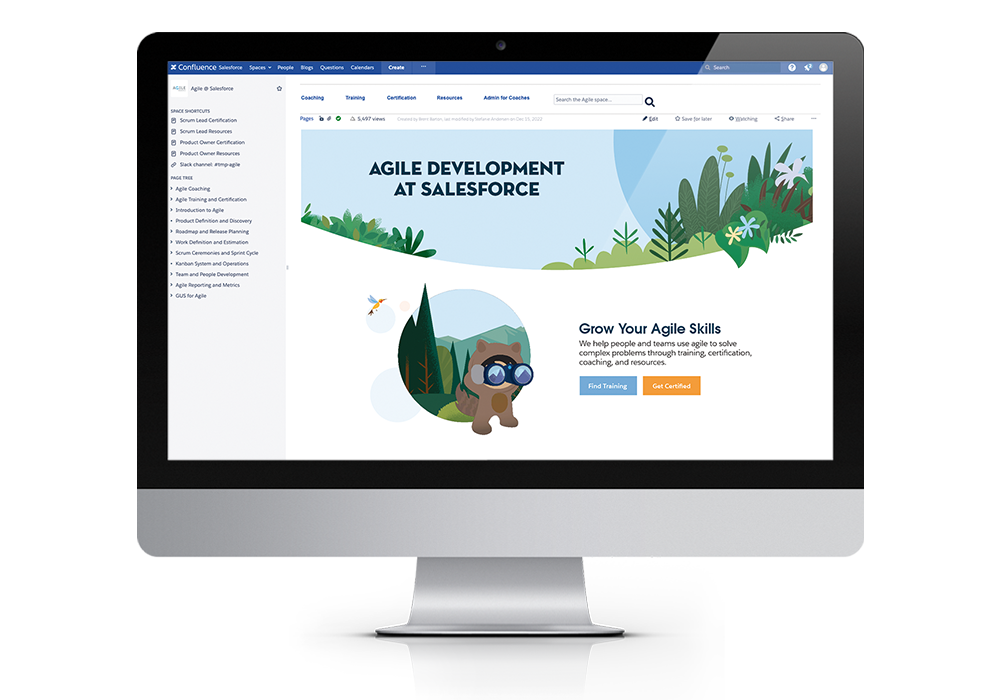
The Agile Coaching Team at Salesforce serves thousands of internal employees. The team provides agile coaching and training to the entire Technology organization, and it also creates and maintains content about agile methodologies, practices, and tools at Salesforce.
Prior to the pandemic, the Agile Coaching Team disseminated information about agile development at Salesforce mostly through in-person training, workshops, and coaching. When Salesforce transitioned to remote work in 2020, the Agile Coaching Team scrambled to create an online content hub to support employees.
When I joined the Agile Coaching Team as a consultant in February 2022, the team had implemented an internal website and established a content council. However, all of their content had been created and organized by agile coaches, not content professionals. The team recognized that they needed someone with deep content expertise to help them develop an effective content strategy and overhaul their content hub.
During the discovery process, I uncovered these challenges:
To address the team’s content challenges, I followed this process:
The complete process is described below in more detail. If you’d rather jump ahead to the impact and outcomes of the project, scroll all the way down to the last section on this page.
When I start a content strategy initiative, I spend time interviewing stakeholders and leaders to gain insight into their expectations and business goals.
For this project, I discovered that agile leaders at Salesforce primarily wanted to improve their self-service content to achieve productivity gains for agile coaches. A coach typically supports dozens of agile teams and frequently addresses the same questions about agile. If the team’s content met users’ needs, it would save coaches time because users could find answers independently.
Stakeholders also wanted to make sure the team’s website was growing and attracting users. A substantial increase in user adoption would justify the team’s investment in content strategy and the site redesign. The growth target was a 30% year-over-year increase in unique site visitors and page views.
Based on conversations with stakeholders, I discovered that there were three primary audiences for the Agile Coaching Team’s website:
There were other audiences—for example, engineering managers and agile team members—but they didn’t use the team’s content as often.
Next, I planned and conducted research sessions to inform the team’s content strategy and the information architecture of the new website. I used two research methods: interviews and card sort studies.
User Research Interviews
I conducted 15 user research interviews: 5 interviews with coaches, 5 interviews with scrum leads, and 5 interviews with product owners.
After synthesizing the research findings, I was able to identify and prioritize the top content needs of users. I delivered a presentation to the Agile Coaching Team to communicate the research results.
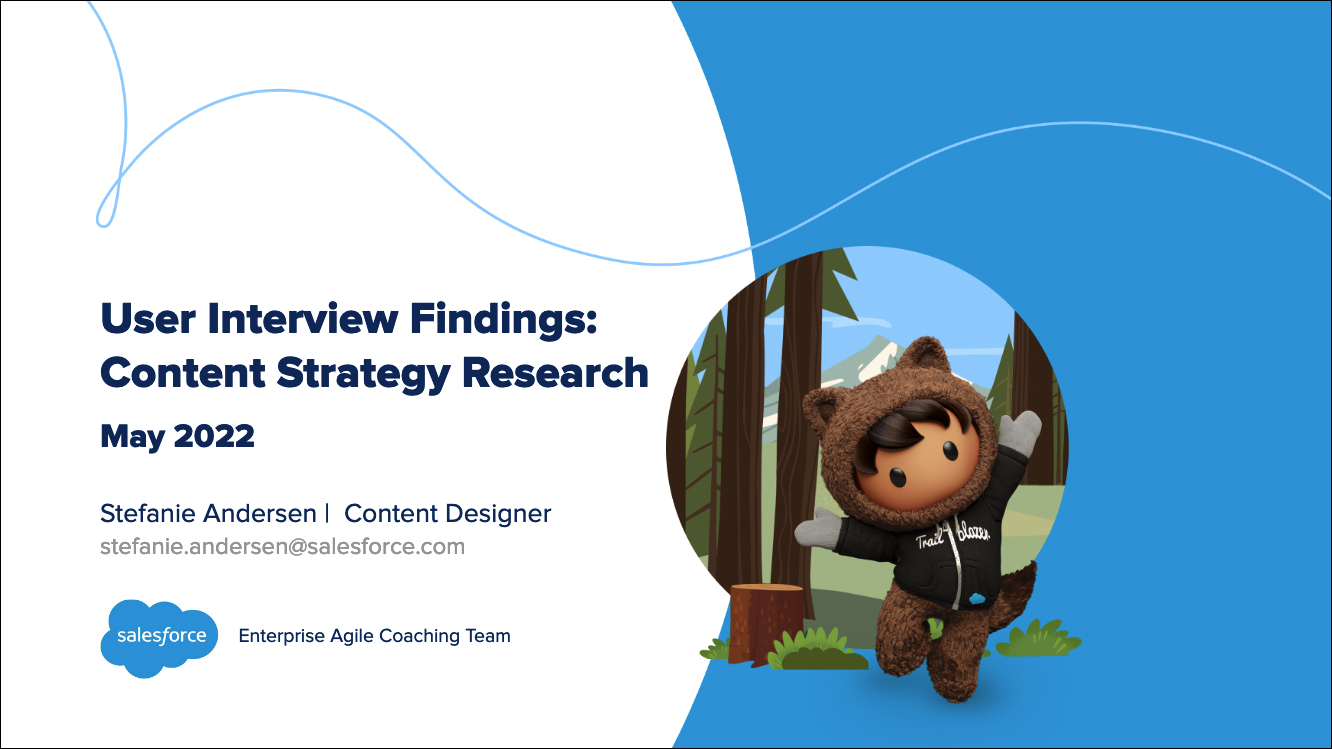
Card Sort Study
A card sort study is a UX research tool that gives you insight into how users understand and categorize information, which helps you define the organization and structure of websites and digital products.
For the Agile Coaching Team’s card sort, I used Optimal Workshop to run the card sort study over a period of two weeks. I performed 19 moderated open card sort studies, each about 45 minutes in length.
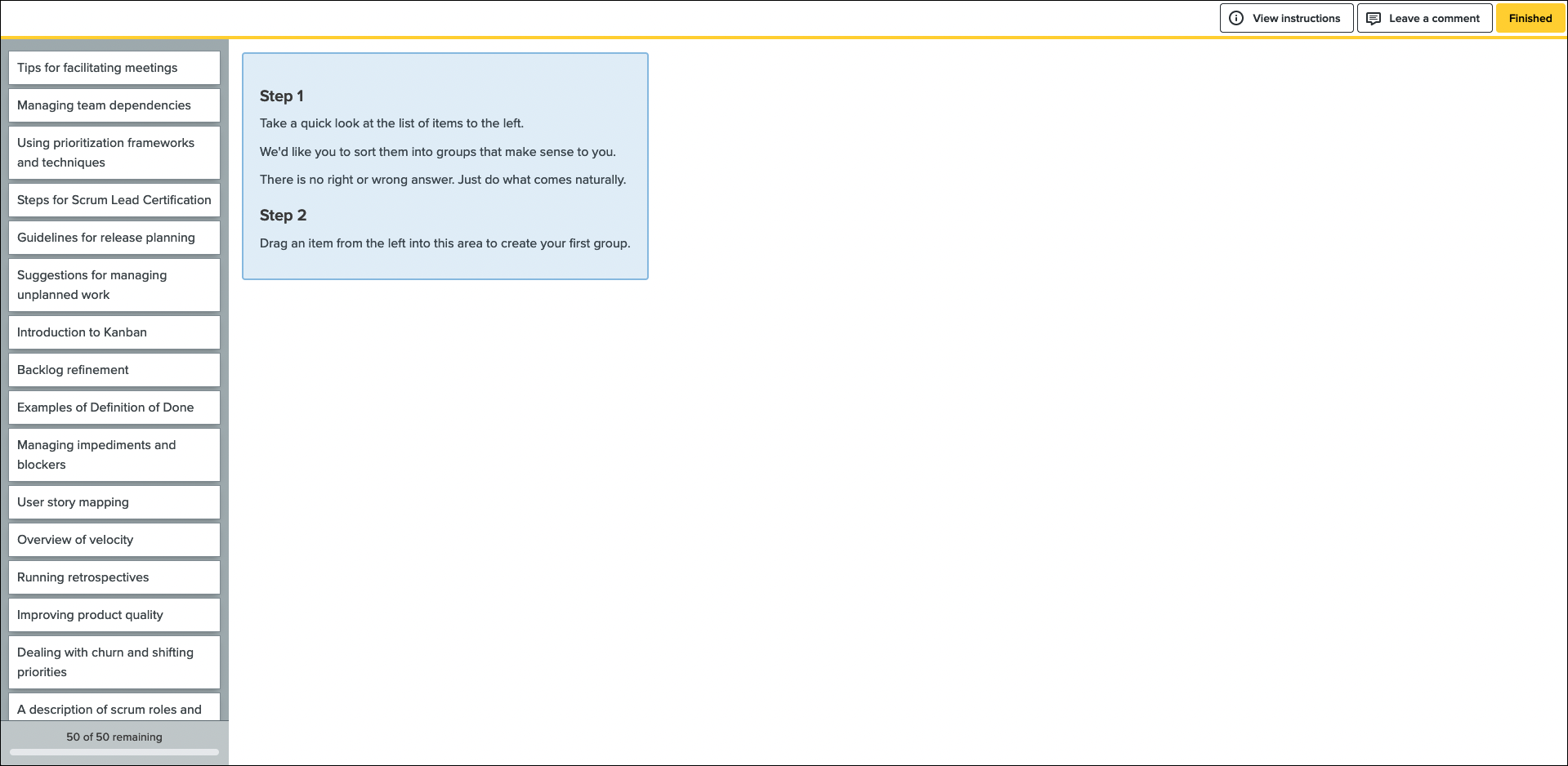
Card Sort Findings
After completing the study, I reviewed both the qualitative and quantitative data. In addition to doing my own analysis, I used Optimal Workshop’s tools to identify strong card pairings and potential information groupings. The diagrams below—the similarity matrix and the dendrogram—show common clusters of cards across participants.
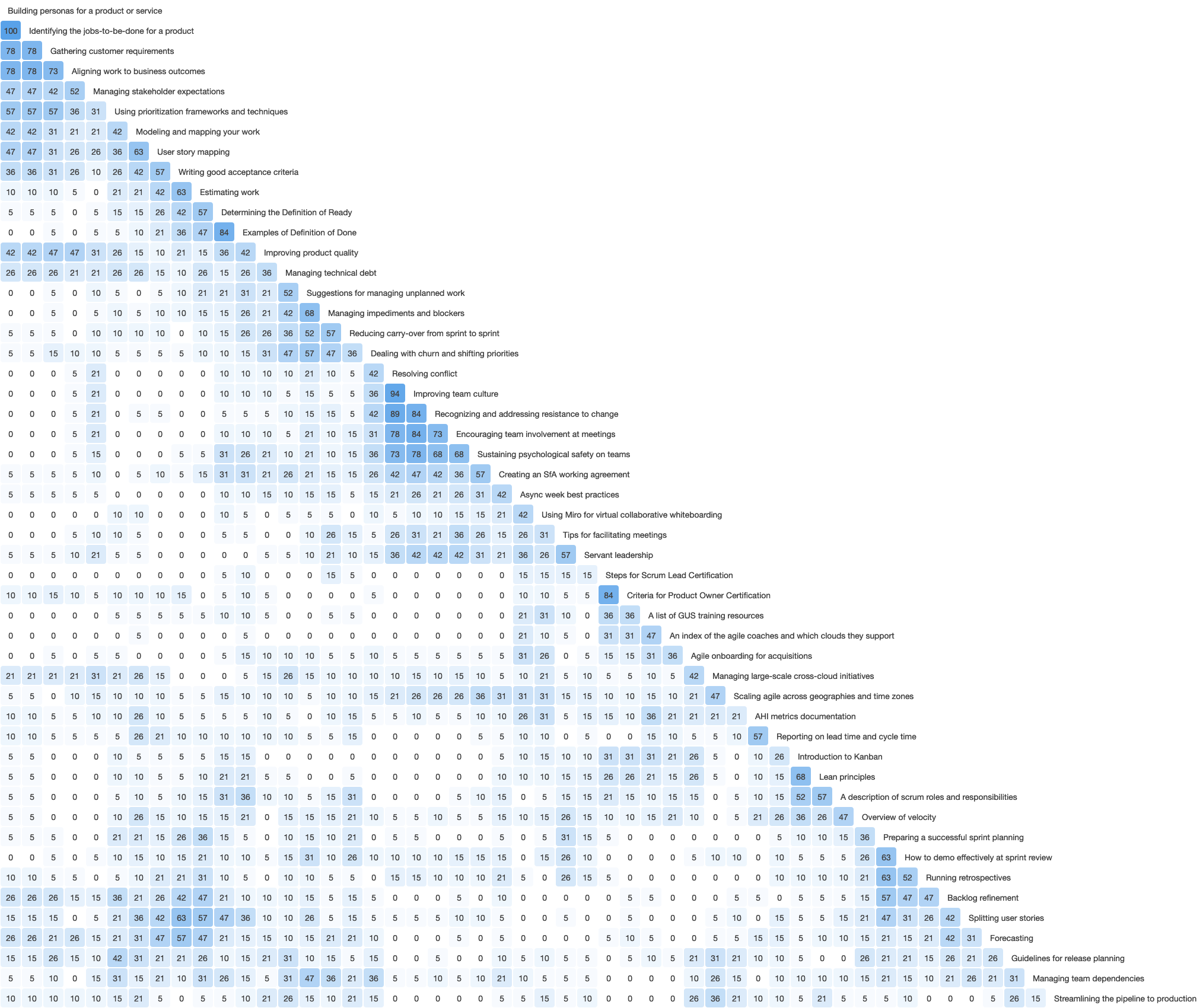
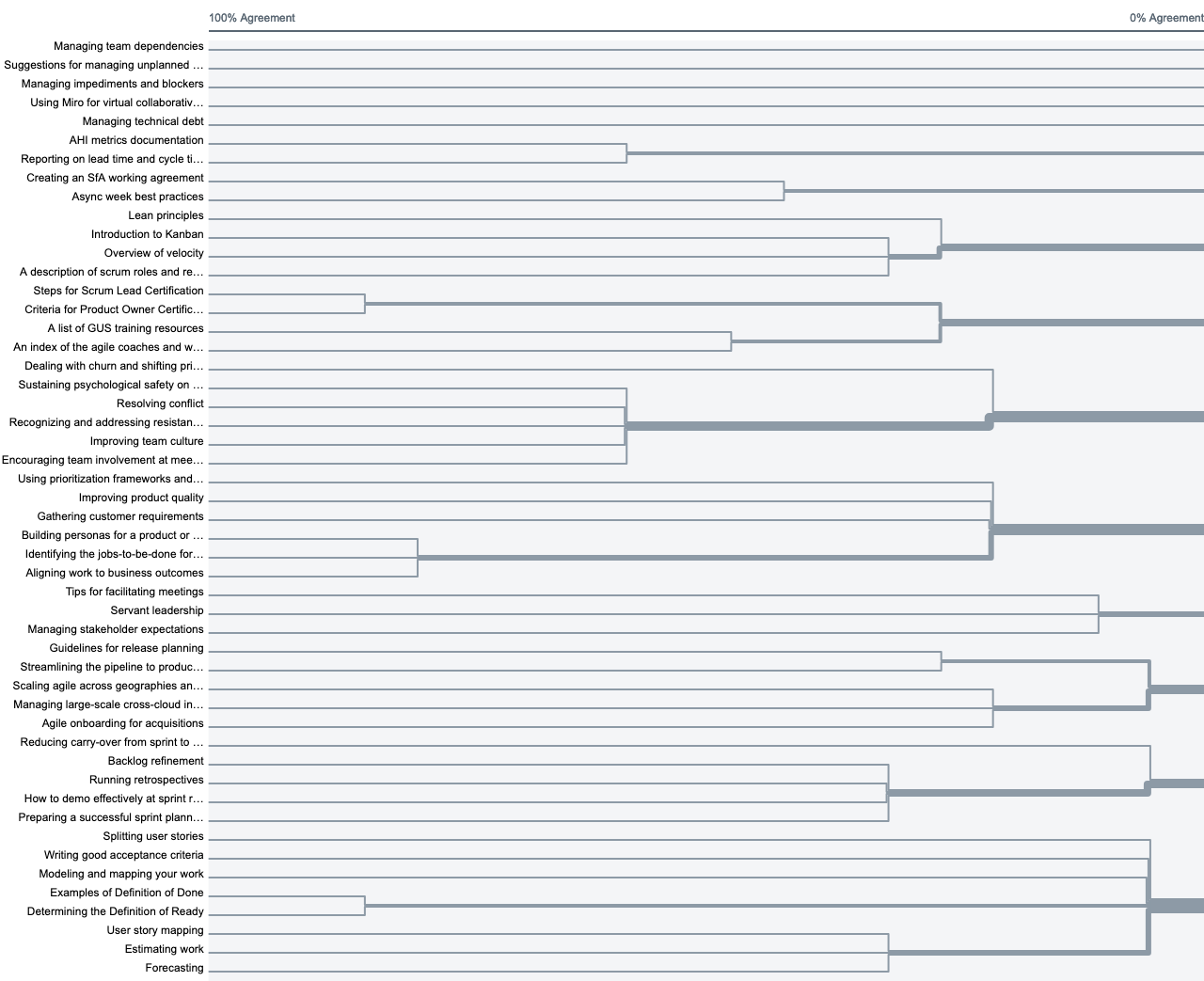
Using a data-driven approach added greater depth and dimension to my analysis. It also made a more compelling case when I eventually presented the new information architecture to stakeholders and team members.
To evaluate the team’s existing content, I inventoried all the content and audited hundreds of web pages and dozens of documents and presentations.
In the audit spreadsheet, I captured details about the content, added notes about its quality, and I made recommendations to keep, update, merge, or delete the pages. I also mined the content for keywords, terminology, and categories.
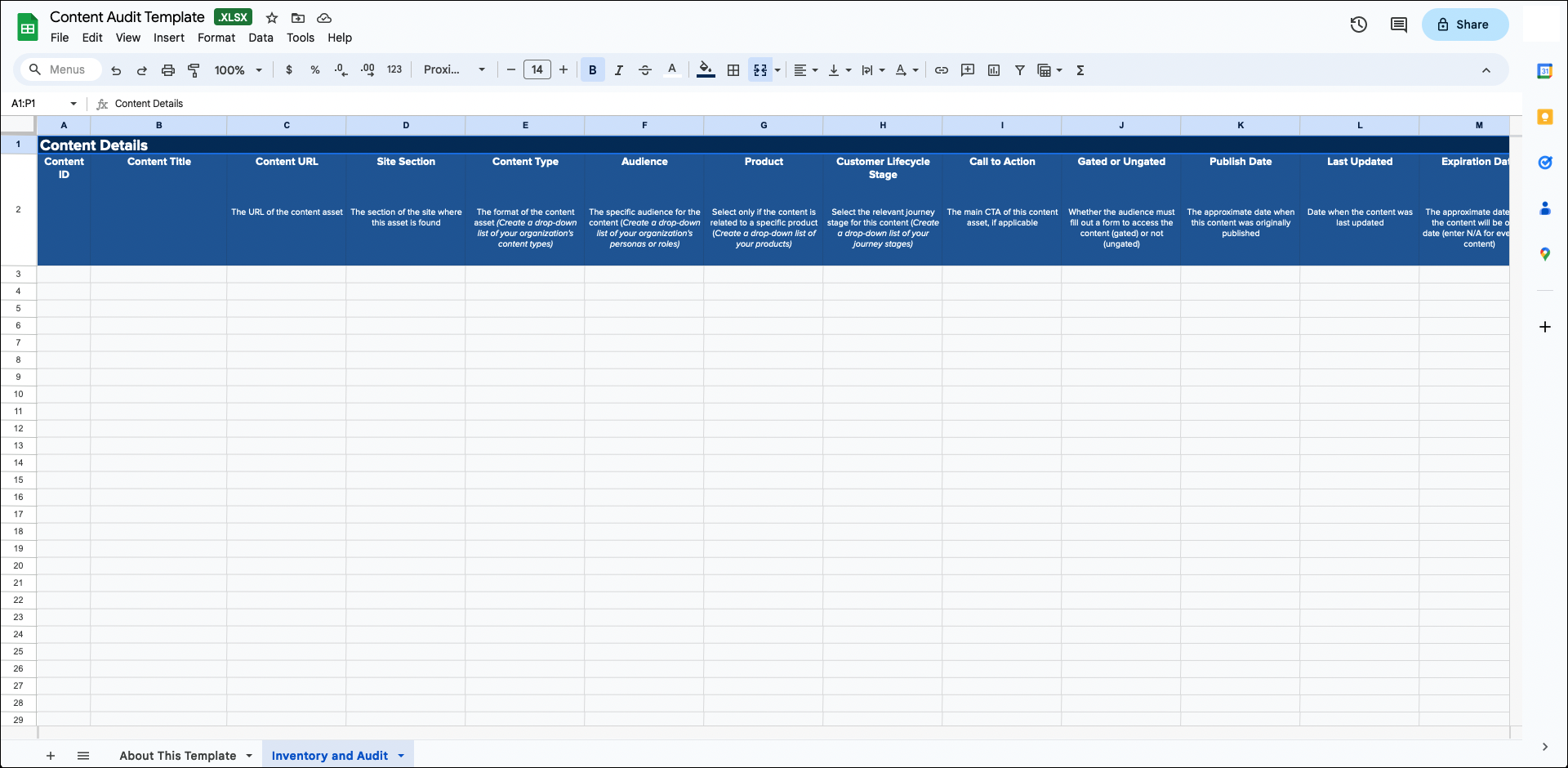
The research and audit phases are crucial steps in developing a content strategy and information architecture. The research findings uncover the needs and mental models of users, which helps stakeholders view their content with fresh eyes and make informed, strategic designs about it. The audit findings reveal the gaps between the content an organization has and the content it needs.
After completing the user research and content audit, it was time to help the team define its content strategy.
Content Backlog
With the research findings as our guide, I helped the team identify the top content needs of their users. Then we created a content backlog, added stories to the backlog, sized the stories, and prioritized the backlog items. The backlog ensures that the team will work strategically to deliver valuable, high-impact content in priority order.
Content Journey Maps
Based on the user research interviews and the input of stakeholders and SMEs, I created user journeys for the two primary audiences of the team’s content: scrum leads and product owners.
Then I combined the results of the audit with the new user journeys to develop content maps. By mapping the content to the different stages of the user journey, I helped the team visualize the end-to-end content experience. Content mapping ensures that the team will be able to deliver the right content to the right people in the right place at the right time.
The content mapping exercise proved so useful that I proposed we create a learning map in Confluence for scrum leads and product owners, which would help them quickly and easily find resources to support their journey. I designed the learning maps and then implemented them in Confluence.
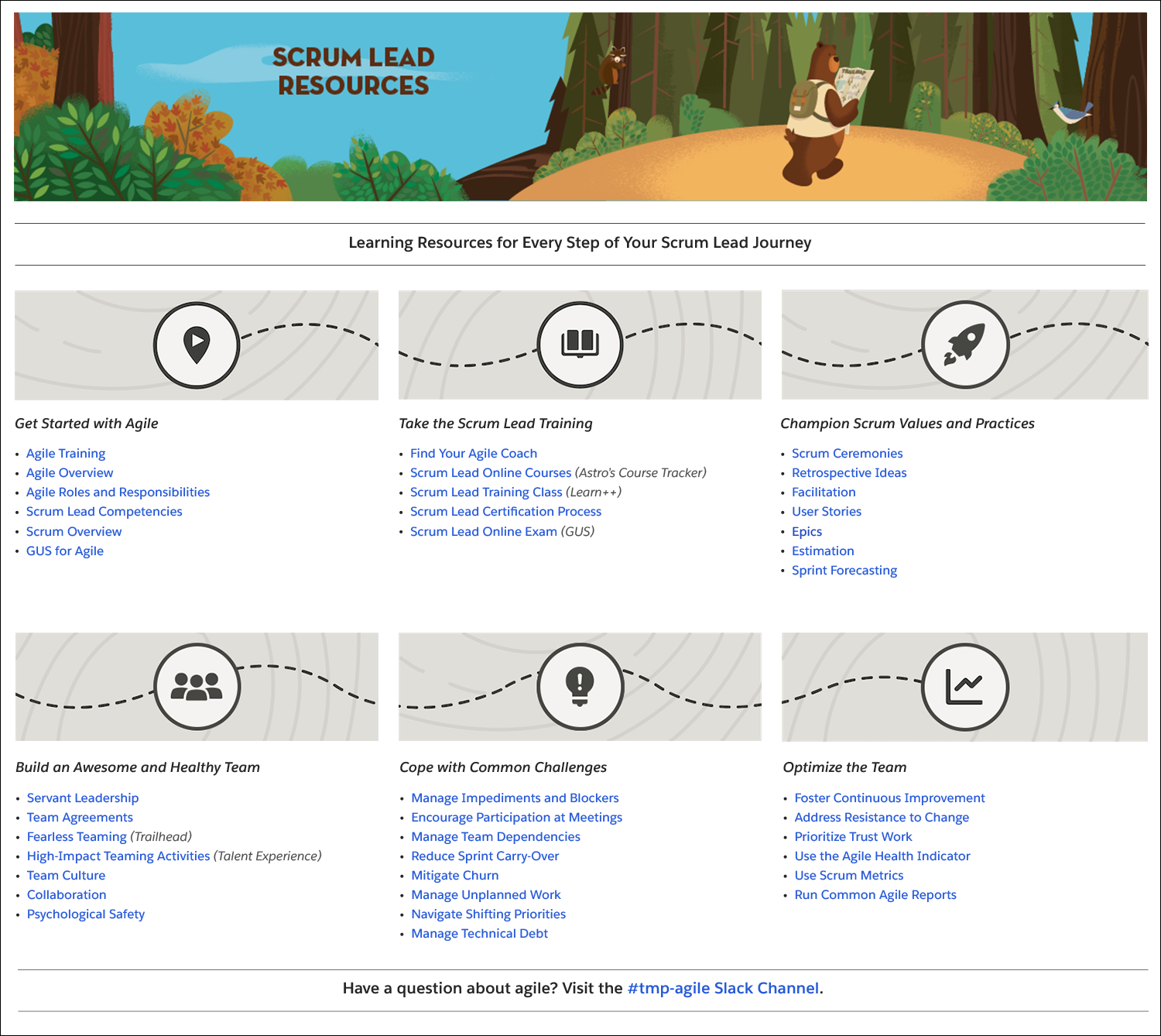
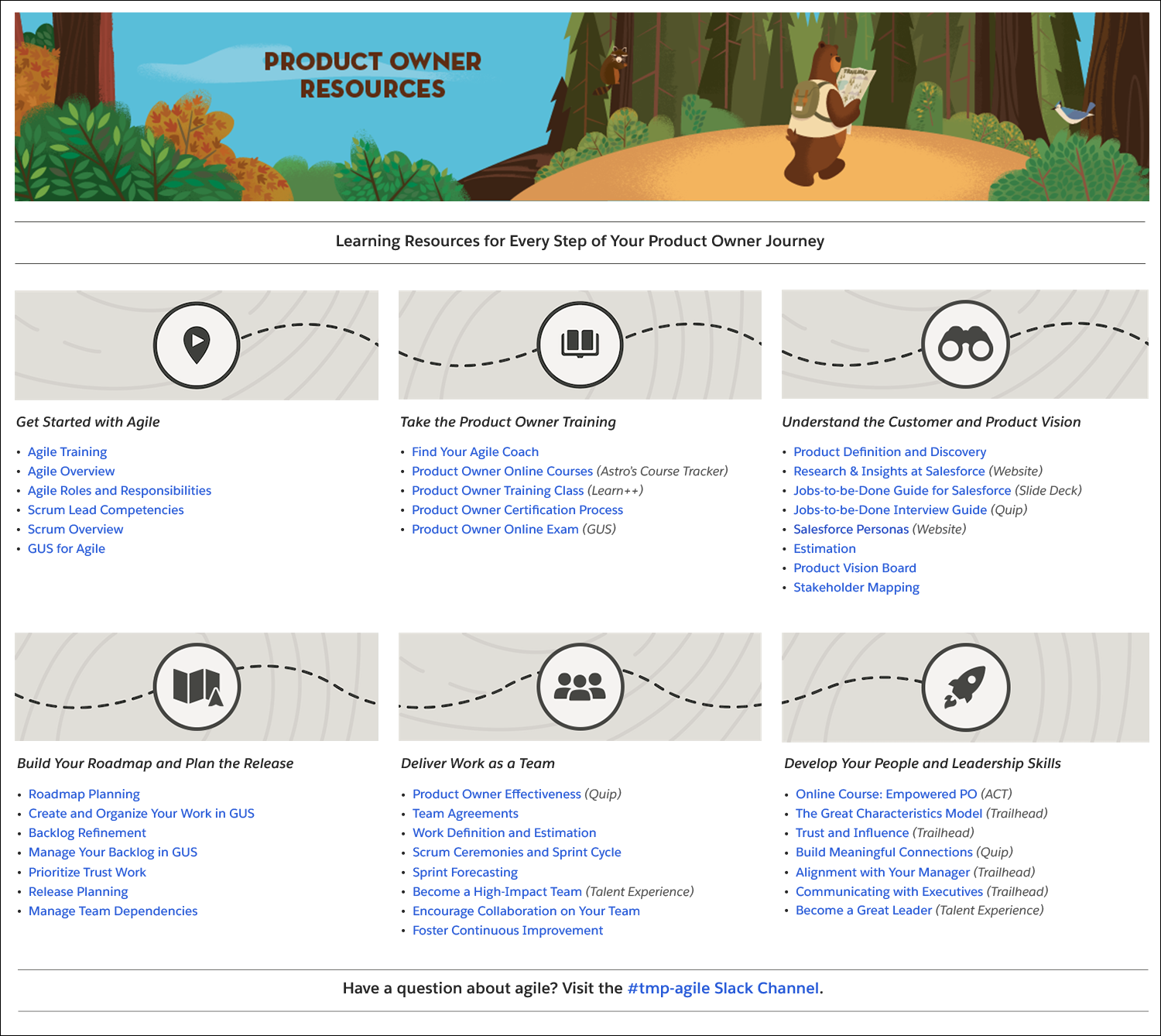
Content Strategy Brief
The content strategy brief is a document that outlines the strategy at a high level. I created a content brief for the Agile Coaching Team that included:
With the content strategy in place, it was time to determine the best way to organize and structure the content. Using the data and insights collected from the interviews and card sort study, I identified eleven main information categories for agile content at Salesforce:
Those categories became the root level of the site architecture. Once the top level of the information structure was in place, I was able to create the sub-categories of the hierarchy. The graphic below shows the first two levels of the sitemap.
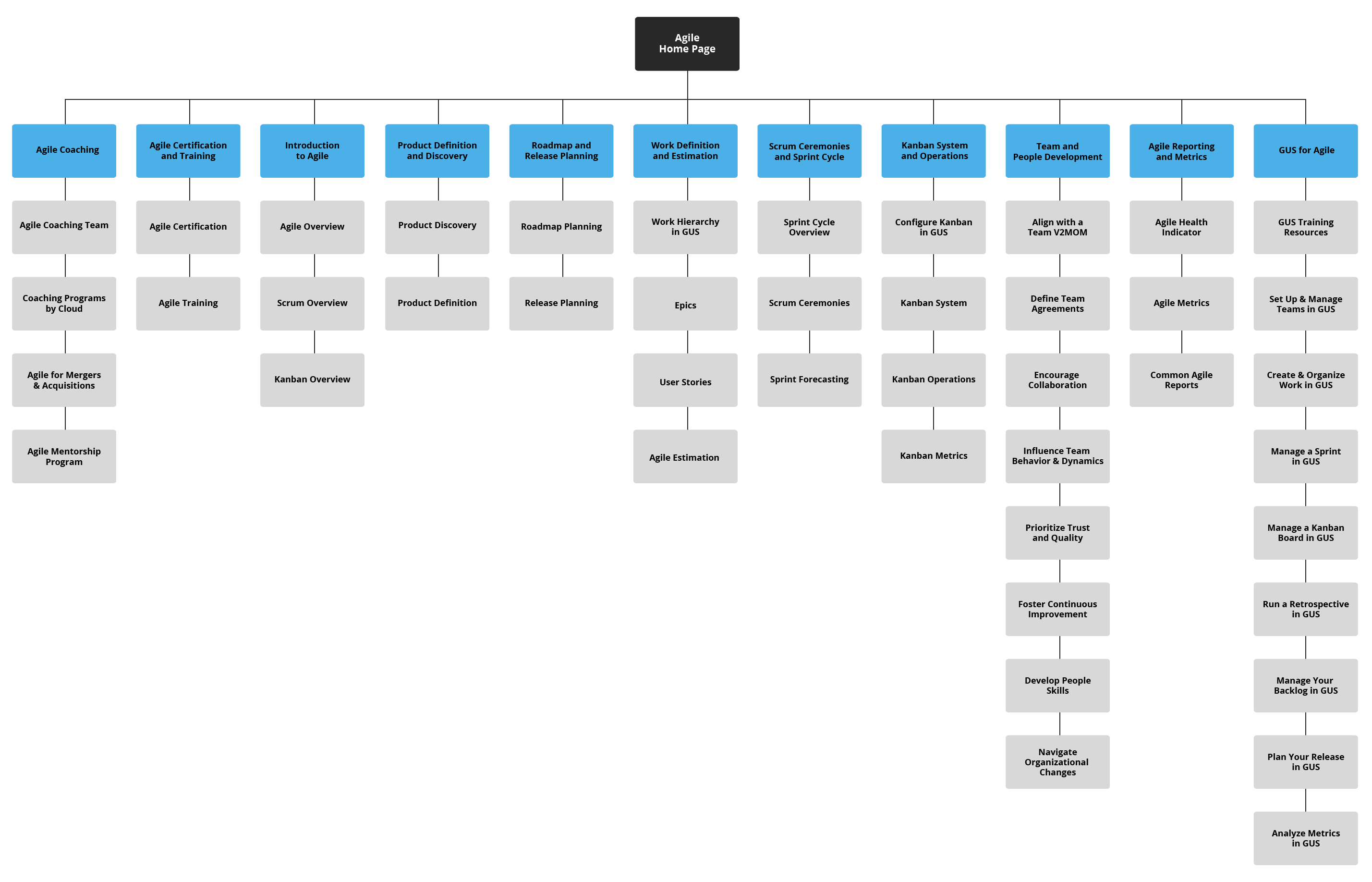
After reviewing the structure and the labels with stakeholders, I got the green light to implement the new site structure in Confluence. I created the new page tree in Confluence. And based on the audit findings, I updated, merged, or deprecated content as I reorganized the site.
The new information architecture gave the website a strong foundation, but the site needed a complete design overhaul to deliver a better overall user experience. When designing the team’s new website, I adhered to Salesforce’s brand guidelines and visual language. I followed this process:

When the design of the website was finished, I implemented the page designs in Confluence. At that point, it was finally time to launch the new site.
I wrote the copy for the announcement of the site launch, and I designed a new Slack template that the team could use for content marketing and outreach. The outreach efforts were handled by the program manager for the Agile Coaching Team.
After wrapping up the content strategy, information architecture, and site redesign, I still had two months left in my contract. I spent that time helping the team implement its new content strategy by tackling a few key items from the content backlog.
I used my technical writing skills to research, plan, and create much-needed documentation about agile metrics, agile work, and agile tools.
As a contractor, I knew my time with the Agile Coaching Team would eventually come to an end. It was important to share my expertise with the team so they would have the knowledge and skills required to continue evolving their content strategy, delivering valuable content, and maintaining the redesigned website.
To help the team improve their content skills, I did the following:
I followed up with the Agile Coaching Team eight months after completing my contract, and they reported these results: